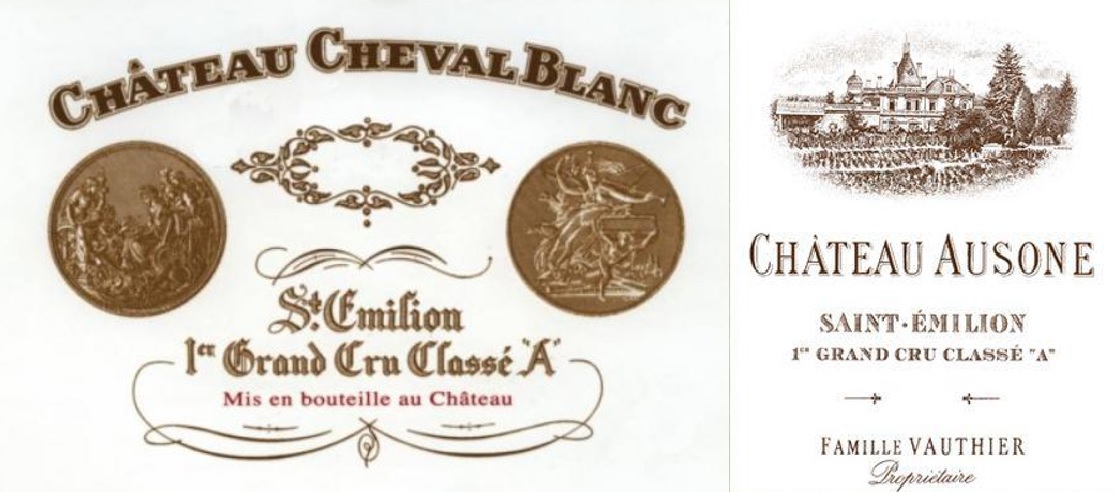
The recent dust up in St. Emilion over the upcoming re-classification of its many Châteaux has raised all sorts of question about the legitimacy of classifying wines. Why not just leave it up to the markets to determine current reputation via the prices that buyers are willing to pay? The higher the price, the higher the reputation and status. But the market-dependent way of ranking wineries begs many questions. For example, what happens when tastes change? Should Châteaux Latour or Ausone—to take two famously tannic, slow-evolving wines—revise their approach to produce wines that are more pleasing and easier to understand at an early stage or should they stick to their tradition and historically grounded character making the wines that capture their respective terroirs and micro-climates? Tastes change, terroir does not! Should owners, vineyard managers and wine makers see their role as guardian/custodians of the properties they handle or as business administrators whose role is the address and meet market needs? Possibly both? The big increase in the plantings of Merlot and concomitant reduction in the use of Cabernet Franc in St. Emilion reveals that running a property as a business has become the main commitment of many owners and managers.
The idea of classification of wine estates runs counter to current trends and tastes which are subject to unpredictable changes. The idea of a classification is intelligible and desirable only if there are enduring factors which determine the quality of the wines made independent of current sensibilities. Many would say that what is being classified, ultimately, are the sites from which the wines in question are produced. For want of a better term, the French word terroir has come to stand for the natural foundations of wine. Soil structure, underlying geology, slope, water drainage, wind patterns, etc… all fall under an expansive notion of terroir. Vineyard management, judgments about picking times, decision about barrel use, fermentation (slow or fast), cellar temperature for storage, are just some of the non-terroir factors in proceeding from grapes to bottle. Even the most ardent proponents of natural wines realize that wines do not and cannot ever make themselves. Are human the stewards of nature, or the perfectors of nature? This issue has been fundamental to human thought, experience and practice of thousands of years. Does intervention improve upon nature or suppress nature?

Classifications based on nature or terroir (all the natural aspects that make it possible to make wine) assume that our responsibility as vignerons and owners is to allow nature to speak clearly, consistently and authentically in the wines we make. Only two wine regions have attempted a pure classification by terroir: Burgundy in 1936 and then Alsace in 1976. Fifty-one vineyards were ranked Grand Cru in Alsace. Despite internal criticism of the classification, the list has remained, but clearly, political considerations always intrude in any effort to classify the previously unclassified. Terroirs do not come with notes from nature designating which are Grand Crus! Terroir quality is revealed over many years and repeated experience of the wines from these sites in comparison with others. Human considerations always influence to some extent the process of classification. What of the hundreds of sites that make excellent if not exceptional wine? There is a movement afoot in Alsace to create a list of Premier Cru vineyards. No one seems to be in a rush to create this secondary classification. Almost everyone agrees that some of the 51 Officially ranked Grand Cru do not deserve the designation and everybody would be much better served if some of the Grand crus were reduced in size allowing for the formation of new Premier Crus from within their ranks. How likely is that to happen? Not.
The classification of vineyards in Burgundy did not happen until 1936, eight-one years after Dr. Jules Lavalle published an unofficial but nonetheless influential classification in 1855. (How interesting that this was the same year that that the official classification of the Châteaux of Bordeaux was published to which I will return.) It articulated the long-held opinions of Burgundy connoisseurs. Lavalle produced a detailed map of every vineyard from Santenay to Dijon, grading them Tête de Cuvée, Première, Deuxième and Troisième Cuvée. This was replaced in 1936 by grand cru, premier cru, village wine and generic Bourgogne. Two of Burgundy’s best and most knowledgeable vignerons, the Marquis D’Angerville from the Côte de Beaune and Henri Gouges from the Côte de Nuits, were largely responsible for the classification. There has been very little controversy about most of the vineyards ranked Grand Cru in Burgundy. However, it is generally agreed that much of two of the largest Grand Crus in the classification—Clos Vougeot and Echezeaux– were given much too much latitude. Perhaps only 30-35% of each is truly worthy of Grand Cru status. In the scheme of things classificatory this is a forgivable “error”. One difference between the classification of Alsace and Burgundy is that vineyards with one owner (called Monopoles in Burgundy) cannot be classified Grand Cru in the Alsatian system. Perhaps this is based on the idea that true quality of a site can only be revealed when several families produce wine for these sites over a long period. This seems highly questionable. Over time a vineyard reveals its true character even if owned by one family. Three of Burgundies greatest vineyards are monopoles: Romanée-Conti, La Tache and La Romanée. Maybe politics and envy have a role in the decision in Alsace not to include one-owner vineyards. No matter: Of course, experienced tasters know which of these unclassified vineyards are actually Grand Cru in quality.
Experience, taste and judgment are the virtues which make true evaluation possible. These virtues operate in a two-fold manner: To understand the role of nature in the production of wine and to communicate these findings and judgments to others. Real judgment acts as a corrective to ever fluctuating trends and sentiments.
The 1855 Classification of Bordeaux was never and could never have been based on the terroirs of Bordeaux. It was a classification of estates/ properties. It has always been about which Châteaux had been producing the best wines. For the most part the wines on the left bank—the Châteaux which were classified—are blends of grapes from large sites surrounding the Châteaux. The names of the Châteaux have functioned as well-known brands in effect. Because the classification was done by the merchants in Bordeaux who knew the properties intimately for many years, the results reflected true expertise and long developed judgment. Since ownership of the many Châteaux has changed significantly over the decades, the human factor in determining the quality of the wines has been front and center. In the 166 years since the classification, the quality of the wines at a number of Châteaux has varied considerably. Everyone realizes that some of the lower rated wines (Fifth and Fourth Grand Cru) have been making much better wine in the last thirty years and that a few of the highly ranked Château have not lived up to the original ranking. Market awareness and pressure has functioned in a salutary manner to cause the under-performers to improve quality. If the 1855 Classification is looked at as a ranking of potential quality of the wines from the various Châteaux it has done a pretty credible job indeed.

The tragic-comic character of the Classification of the wines of St. Emilion is worthy of a separate treatise. The Châteaux were first classified in 1955 with several categories which right from the outset seemed politically motivated. The categories were Grand Cru, Grand Cru Classé B, and at the very top of the pecking order, Grand Crus Classé A. The ranking by number, fundamental to the 1855 classification of Médoc Châteaux was deliberately avoided. This attempt a democratization may have been meant to appease the demands of the Châteaux owners. No Second, Third, Fourth or lowly Fifth status! Furthermore, it was the intention right from the outset to schedule re-classifications every ten years or so. This would presumably keep the Châteaux on their toes to avoid the humiliation of demotion and to allow inclusion of properties making better wine than in their past. The whole thing all but collapsed in 2006 after numerous complaints of bias in the ranking. The court battles, legal reversals, etc…, made a mockery of the classification. In fact, the changes in wine-making and vineyard management in St. Emilion have been far more extensive than anywhere else in Bordeaux. The wine critics have used the 100-point scale to point to top performers quite apart from any official classification. Indeed, one could argue that most buyers have little or no interest in classifications, just in quality and the opinion of prominent wine writers. The recent withdrawal of the original 2 Châteaux classified as Grand Cru Classé A, Ausone and Cheval Blanc, is just the latest in the tensions within St. Emilion. Politics and Terroir should not be mixed and yet will never be fully separated.

 中文
中文



